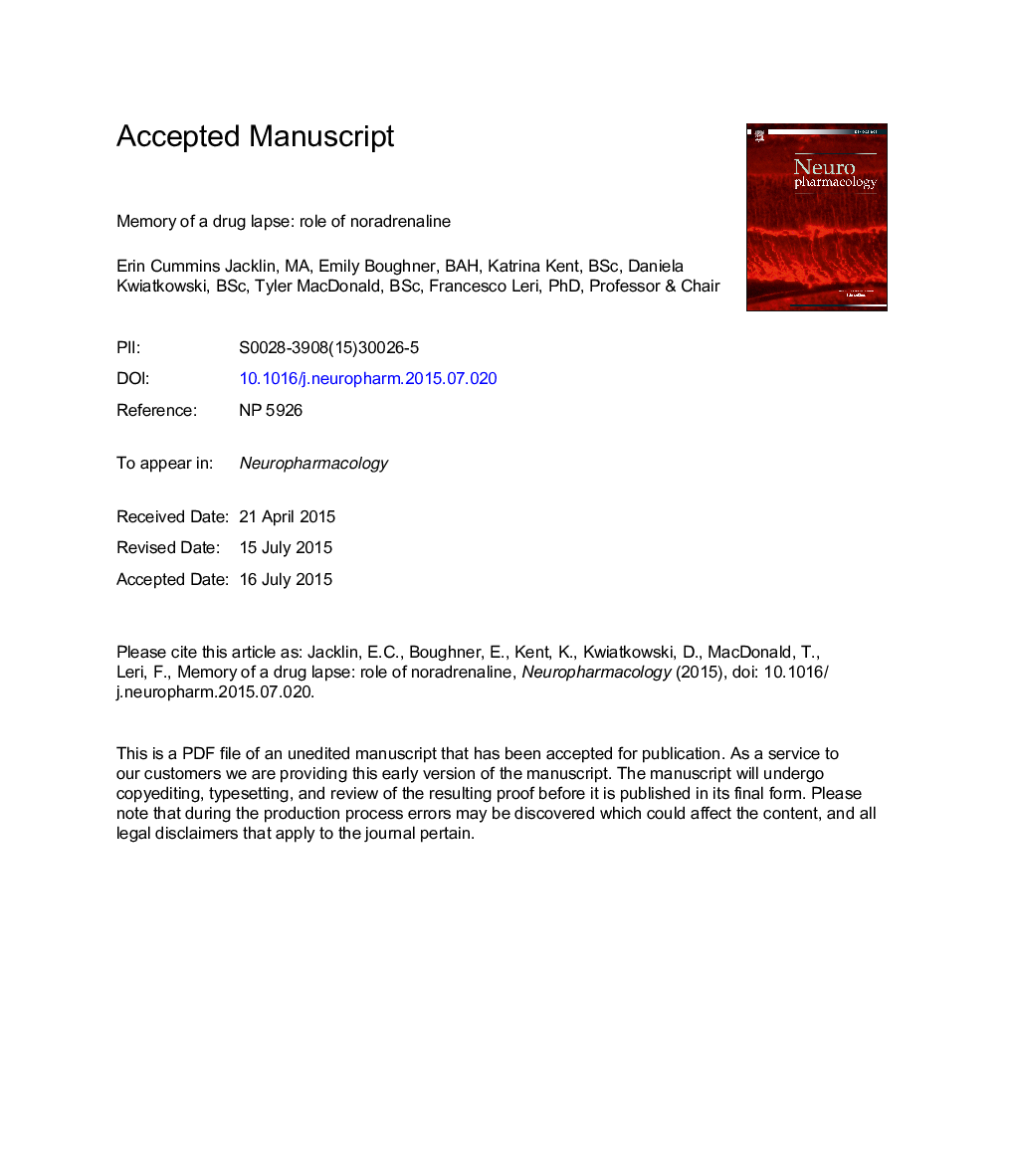| Article ID | Journal | Published Year | Pages | File Type |
|---|---|---|---|---|
| 5813761 | Neuropharmacology | 2015 | 40 Pages |
Abstract
Memory processes may be involved in the transition from drug lapses to relapse. This study explored the role of noradrenaline (NA) in reacquisition of place preference, an animal model of relapse that involves the updating of memories about drugs and associated stimuli. Experiments involved 7 phases: habituation, conditioning (1 mg/kg heroin and vehicle; 4 pairings each), test of conditioning (Test I), extinction (vehicle and vehicle; 4 pairings each), test of extinction (Test II), reconditioning (1 mg/kg heroin and vehicle; 1 re-pairing each), and test of reconditioning (Test III). To target memory stabilization processes, various treatments were administered post-reconditioning: systemic clonidine (0, 10, 40, 100 μg/kg; α2 adrenergic receptor agonist); intra-locus coeruleus (LC) clonidine (0, 4.5, 18 nmol); and intra-basolateral amygdala (BLA) propranolol/prazosin (0, 34/2.4 nmol; β and α1 adrenergic receptor antagonists, respectively). The effect of post-reconditioning systemic clonidine on BLA c-fos expression was also assessed. It was found that systemic clonidine dose-dependently blocked heroin reacquisition when given immediately or 4 h post-reconditioning, but not 8 h later or 4 h prior to Test III. Similar effects were observed following intra-LC clonidine infusions. Post-reconditioning systemic clonidine also blocked reacquisition of cocaine place preference (20 mg/kg). Finally, BLA c-fos expression was reduced by clonidine, and blockade of BLA β and α1 receptors prevented heroin reacquisition. These findings in rats support the hypothesis that relapse involves memory stabilization processes that can be disrupted by suppression of central NA activity.
Related Topics
Life Sciences
Neuroscience
Behavioral Neuroscience
Authors
Erin Cummins Jacklin, Emily Boughner, Katrina Kent, Daniela Kwiatkowski, Tyler MacDonald, Francesco Leri,
